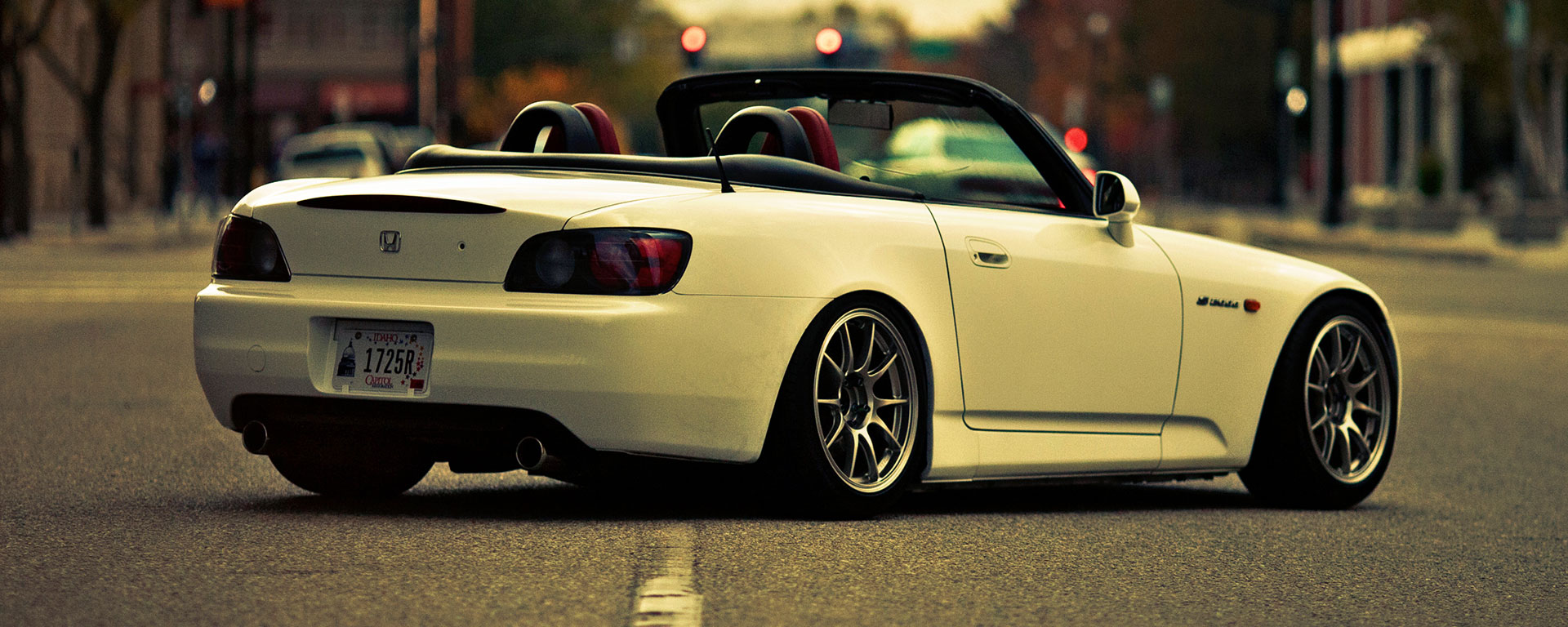History
The Honda S2000 is a roadster that was manufactured by Japanese automaker Honda between 1999 and 2009. First shown as a concept car at the Tokyo Motor Show in 1995, the production version was launched in April 1999 to celebrate the company's 50th anniversary. The S2000 is named for its engine displacement of 2 liters, carrying on in the tradition of the S500, S600, and S800 roadsters of the 1960s.
Several revisions were made throughout the car's lifetime, including changes to the engine, gearbox, suspension, and interior and exterior. Officially two variants exist: the initial launch model was given the chassis code AP1, Though cosmetically similar, the facelift version (known as the AP2 in the USA) incorporated significant changes to the drivetrain and suspension. Production of the S2000 ceased in June 2009. In Japan, it was exclusively sold through the Honda Verno sales channel.
First Generation
(AP1 - 1999–2003)
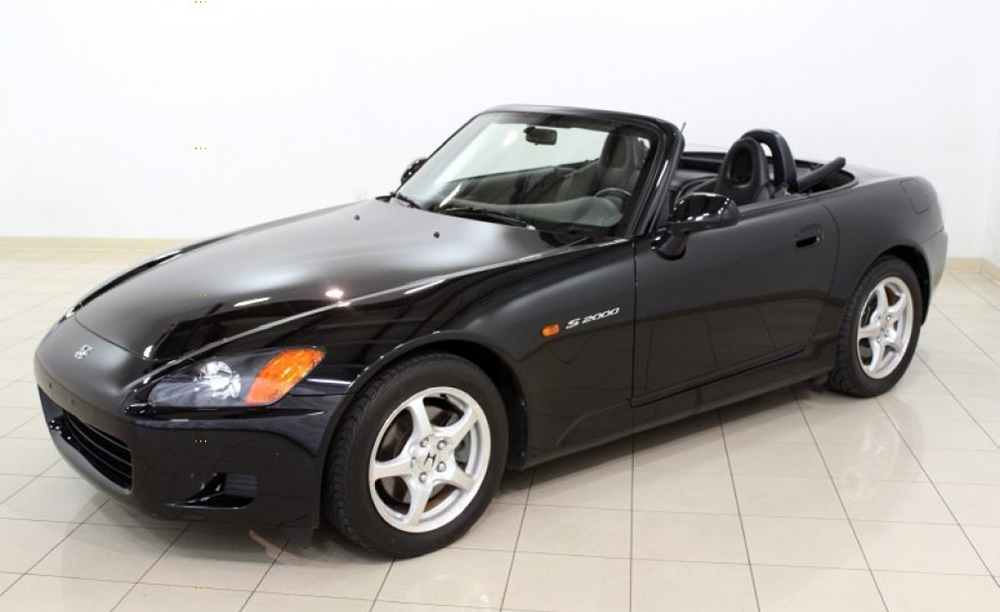
The S2000 was introduced in 1999 for the 2000 model year and was given the chassis designation of AP1. It featured a front mid-engine, rear-wheel-drive layout with power being delivered by a 1,997 cc (122 cu in) inline 4-cylinder DOHC-VTEC engine. The engine (codenamed F20C) produced outputs of 177–184 kW (237–247 hp), and 208–218 N·m (153–161 lbf·ft) depending on the target market. The engine was mated to a six-speed manual transmission and Torsen limited slip differential. The S2000 achieved what Honda claimed as "the world's top level, high performance 4-cylinder naturally aspirated engine".
Features include independent double wishbone suspension, electrically assisted steering and integrated roll hoops. The car featured 16 in (41 cm) wheels with Bridgestone Potenza S-02 tires. The compact and lightweight engine, mounted entirely behind the front axle, allowed the S2000 to achieve a 50:50 front/rear weight distribution and lower rotational inertia. An electrically powered vinyl top with internal cloth lining was standard, with an aluminum hardtop available as an optional extra (in 2001). Honda offered Berlina Black, New Formula Red, Gran Prix White, Sebring Silver and Silverstone Metallic in the US domestic market.
The 2001 model was largely unchanged; Honda added a digital clock to the radio display and made the rear wind blocker standard. Honda also added Spa Yellow to the US domestic market lineup. For the 2002 model year, suspension settings were revised and the plastic rear window was replaced by a glass unit incorporating an electric defroster. Other updates included slightly revised tail lamps with chrome rings, an upgraded radio with separate tweeters, a leather gearshift knob, leatherette console cover and a revised engine control unit. Honda added Suzuka Blue to the US domestic market lineup.
The AP1 was manufactured up to 2003 at Honda's Takanezawa plant, alongside the Honda NSX and Honda Insight hybrid.
Type V
(Japan - 2000)
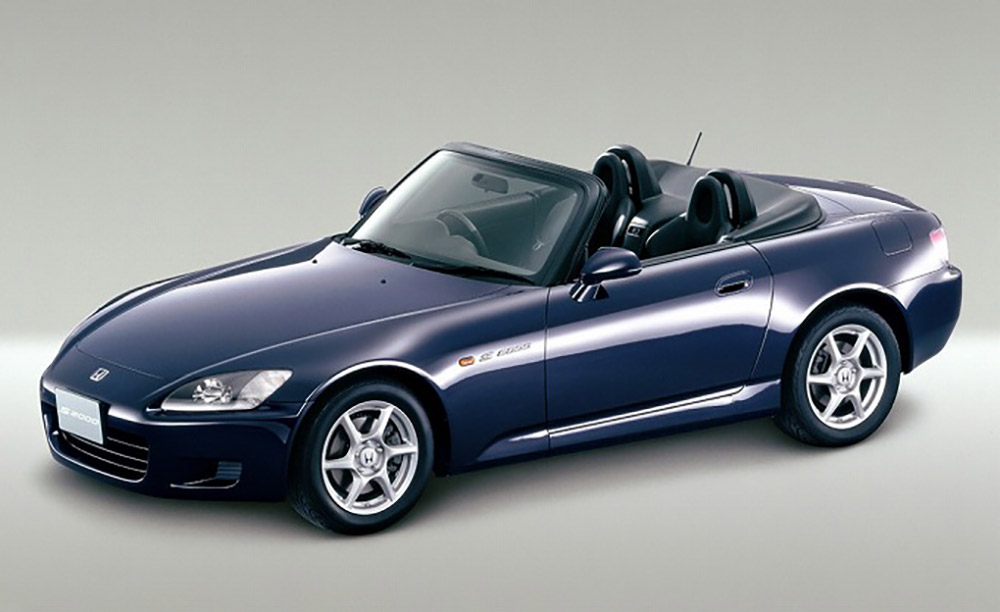
The Japanese domestic market received the Type V edition starting in mid-2000. Variable Gear Ratio Steering (VGS), is a steering system that continuously changes steering ratio based upon vehicle speed and steering angle to provide improved handling. Honda announced the S2000 type V on July 7, 2000 as the first system of its kind. The lock-to-lock steering ratio was reduced to 1.4 turns (Stock is 2.4). Honda outfitted Type V cars with revised damper units, stabilizer and limited slip differential “to complement the VGS.” Equipped cars came with a special steering wheel and a VGS badge on the rear. [8] The Type V steering/handling package.
Second Generation
(AP2 or AP1 Facelift in Europe - 2004–2009)
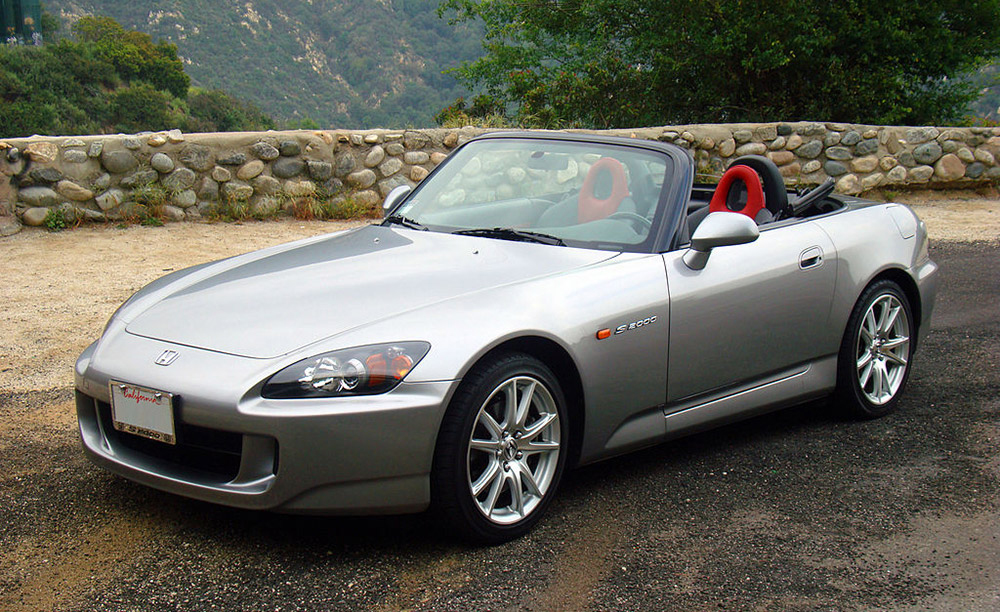
The 2004 model S2000 underwent several significant changes. Production of the S2000 moved to Suzuka. The new model introduced 17 in (43 cm) wheels and Bridgestone RE-050 tires along with a retuned suspension to reduce oversteer. The spring rates and shock absorber damping were altered and the suspension geometry modified to improve stability by reducing toe-in changes under cornering loads. The subframe has also received a revision in design to achieve a high rigidity. In the gearbox the brass synchronizers were replaced with carbon fiber. In addition, cosmetic changes were made to the exterior with new front and rear bumpers, revised headlight assemblies, new LED tail-lights, and oval-tipped exhausts. Although all the cosmetic, suspension and most drivetrain upgrades were included on the Japanese and European S2000s, they retained the 2.0l F20C engine and remained designated as an AP1.
For the North American market the updates also included the introduction of a larger version of the F20C (F22C1), this larger engine gives rise to the chassis designation AP2.F22C1, the engine's stroke was lengthened, increasing its displacement to 2,157 cc (132 cu in). At the same time, the redline and fuel cutoff were reduced from 8,800 rpm and 9,000 rpm to 8,000 rpm and 8,200 rpm respectively, mandated by the longer travel of the pistons. Peak torque increased 6% to 220 N·m (160 lbf·ft) at 6,800 rpm while power output remained unchanged, 177 kW (237 hp) at a lower 7,800 rpm. In conjunction with its introduction of the F22C1, Honda also changed the transmission gear ratios by shortening the first five gears and lengthening the sixth.
In 2006, the F22C1 was also introduced to the Japanese market, with slightly higher outputs (178 kW (239 hp) and 221 N·m (163 lbf·ft)). The F20C continued in all other markets. The 2006 model introduced a drive by wire throttle, an electronic stability control system, new wheels, and one new exterior color, Laguna Blue Pearl. Interior changes included revised seats and additional stereo speakers integrated into the headrests.
Club Racer
(U.S. - 2008)
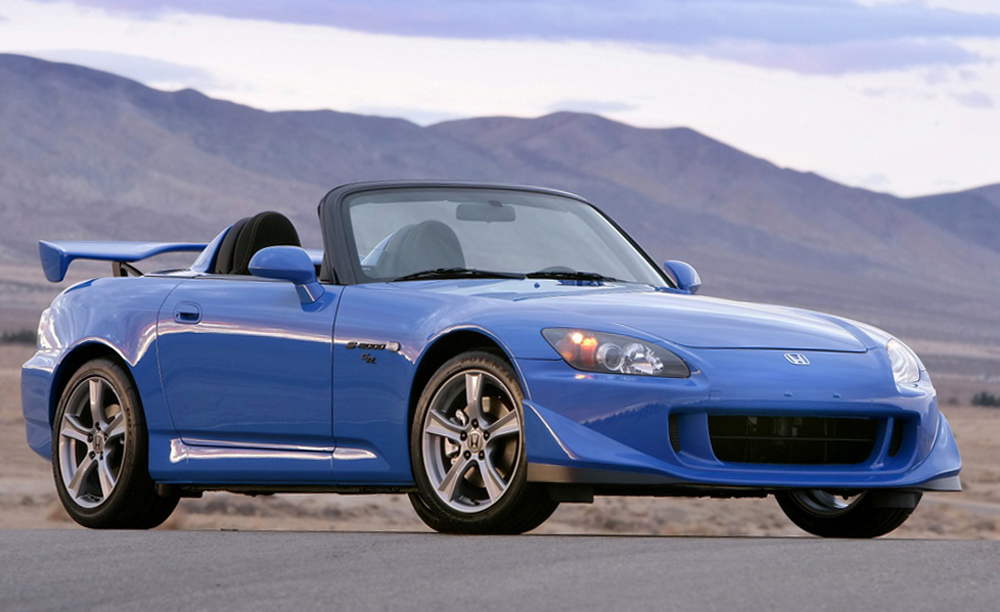
The 2007 model year marked the first time the S2000 was offered in more than one trim level in the United States. In addition to the base model, Honda offered a more track-oriented version of the S2000, distinguished by reduced weight, fewer amenities, and an increase in performance. The S2000 Club Racer made its world debut at the New York International Auto Show on 4 April 2007.
Changes for the CR included a lower ratio steering rack, revised exhaust system, black lug nuts, darker colored wheels, clear side markers, stiffer suspension and all-new Bridgestone Potenza RE070 tires, widened at the rear from 245/40R-17 to 255/40R-17. A revised body kit, composed of a redesigned front lip, and a large spoiler, were wind-tunnel tested and claimed to reduce the overall coefficient of lift by 70–80%. The power folding soft top was removed and replaced with additional chassis bracing topped off with a tonneau cover, while the hard top, optional on other models, became a standard feature on the CR. Honda also revised the shift knob over the base with an exclusive spherical aluminum shift knob that rests 12.6 mm lower for a 6 percent reduction in shift stroke compared to the conventional S2000 cylindrical shift knob (aluminum/leather wrapped). Conversely, the shift load effort increased by 10 percent with the new design.
CR models were only available with yellow and black alcantara interior. Additionally the CR interior had faux carbon fiber overlays on the center console and radio door and a peak power indicator light on the instrument gauge cluster that would flash when the engine was producing its peak power output. Finally, in an effort to reduce weight and lower the center of gravity, the spare tire was omitted and air conditioning and stereo were offered only as options. Net weight savings without the additional hardtop came to 41 kg (90 lb) relative to the standard model. The engine in the S2000 CR was unchanged from the standard trim. Shigeru Uehara, the designer of the S2000, stated that the CR was positioned between the Type S and a hypothetical Type R. Honda has never made an official Type R for the S2000.
Production volume of fewer than 2,000 units was expected however the final number produced was 699 for the combined 2008 and 2009 model years. The production numbers were broken down as follows; Apex Blue Pearl: 200 (21 Delete models) Rio Yellow Pearl: 140 (20 Delete models) Berlina Black: 269 (10 Delete models) Grand Prix White: 90 (8 Delete models) for a total 699 (668 for 2008, 31 for 2009). Honda continued to offer both the standard and CR versions unchanged for the 2009 model year.
Type S
(Japan - 2008)
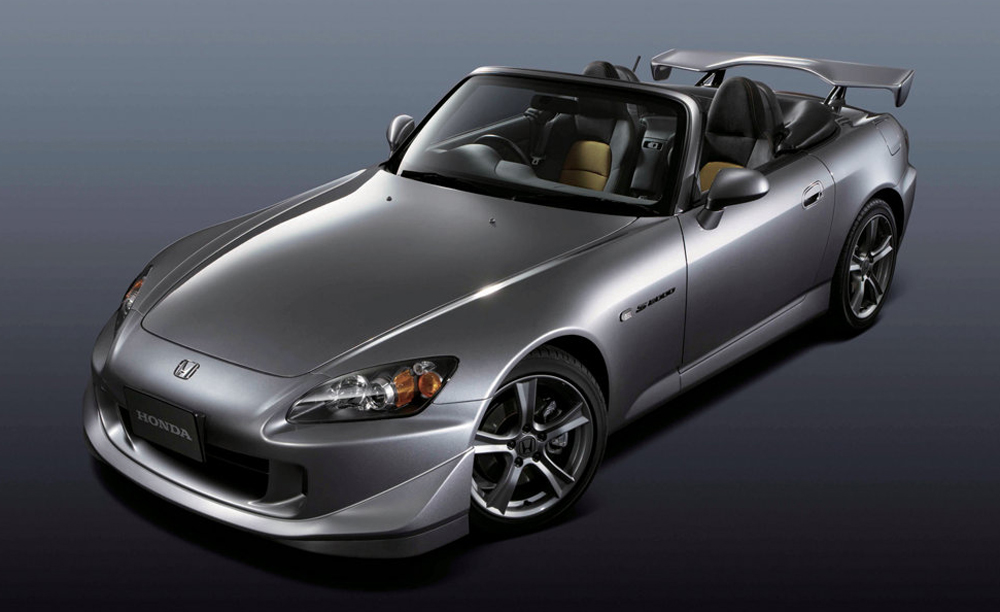
The Japanese domestic market (JDM) received the Type S edition for the last two years of production (2008-2009). Changes are similar to the US market's CR edition, sharing the weight loss regime, a purpose built bodykit providing much higher downforce, finished with bespoke wheels and interior. Although it shares the wheels with the CR edition, the Type S retains the rear tire size of 245/40R-17 for more agile handling. A specific Type S suspension setup with improved geometry was designed to enhance the handling, the setup is stiffer but more compromising than the CR setup to suit it better to everyday spirited driving and the Japanese 'touge' experience. The Type S retains its soft top folding mechanism.
The interior offered a Type S specific yellow and black alcantara material scheme. Leather interior from the standard S2000 was available as a free option. The aluminum shift knob with reduced shift stroke is shared with the CR. While the CR is designed to be the ultimate track car, the Type S is designed for improved handling and retains some creature comforts. Only 1755 copies of the Type S was made and sold exclusively in Japan. (2007:168 units, 2008:827 units, 2009:737 units, 2010 [Jan-Jun]:23 units)
GT
(U.K. - 2009)
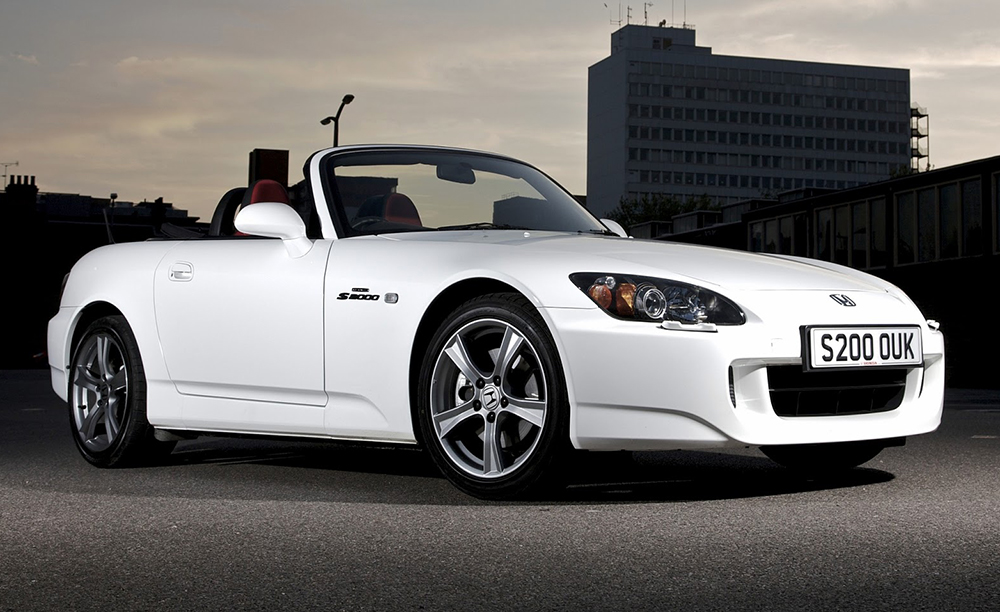
In the United Kingdom, the 2009 model was offered in both roadster and GT trim. The GT featured a removable hard-top and an outside temperature gauge. On-the-road prices of these trims were £27,300 and £27,850 respectively.
Ultimate Edition and GT Edition 100
(U.K. - 2009)
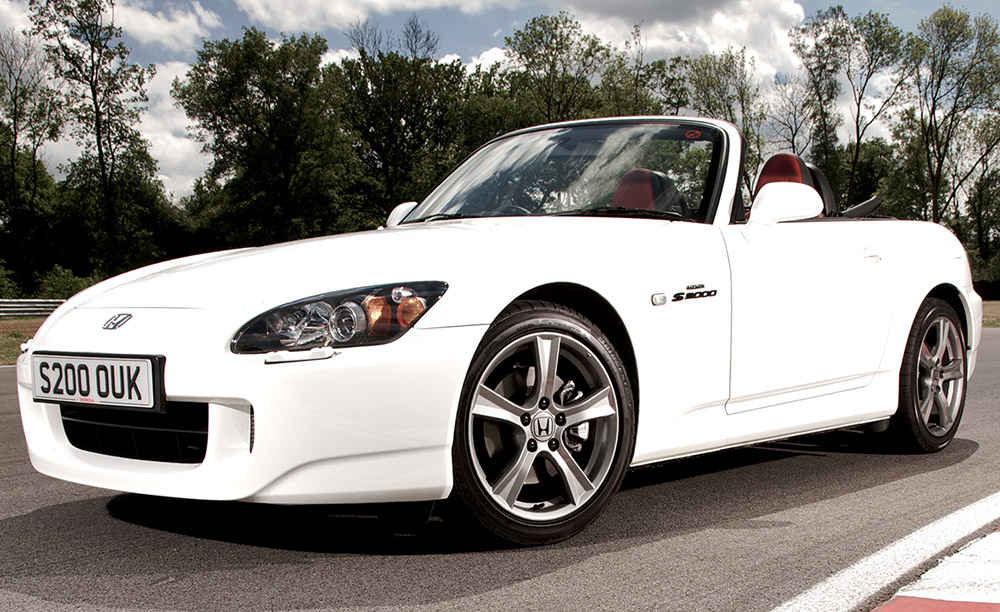
The S2000 Ultimate Edition (continental Europe) and GT Edition 100 (UK) were limited versions of the S2000 released to commemorate the end of production. Both included Grand Prix White body colour, removable hard top, graphite-coloured alloy wheels, red leather interior with red colouring for stitching on the gear lever gaiter.
The Ultimate Edition was unveiled at the 2009 Geneva Motor Show and went on sale in March 2009. The GT Edition 100 was a limited run of 100 units released for the UK market. In addition to the Ultimate Edition's specification, it featured a black S2000 badge and a numbered plaque on the kick-plate indicating which vehicle in the series it was.

